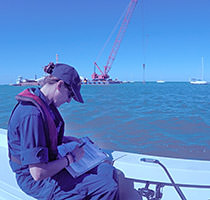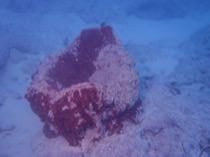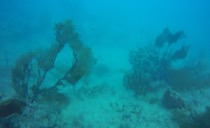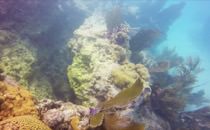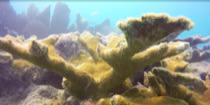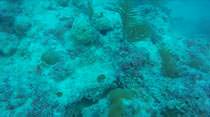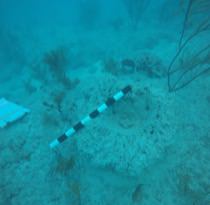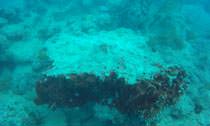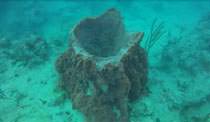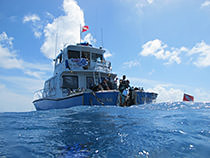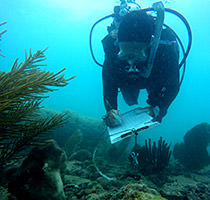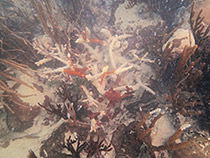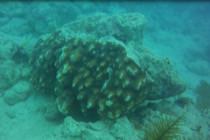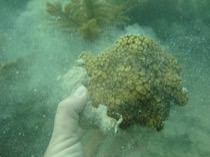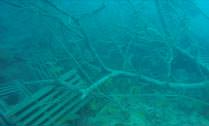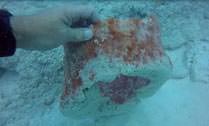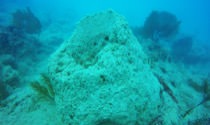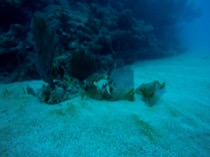Post-Hurricane Irma Images
Videos
In September, Hurricane Irma roared over Florida Keys National Marine Sanctuary. Since then, we've been working with partners to assess the damage and aid in recovery from the storm. Credit: NOAA
A stand of pillar coral south of Stock Island was heavily impacted by Hurricane Irma. Wave energy, surge and bio-erosion have altered the reefscape. Credit: Benjamin D'Avanzo/NOAA
A thick accumulation of fine sediment carried by Hurricane Irma's powerful wave action covers the coral reef's surface, revealing the underlying purple crusts of coralline algae and the turf algae that is preventing the sediment from clearing. Credit: Steve Gittings/NOAA
Divers assessing hurricane damage in the northern portion of the Florida Keys National Marine Sanctuary frequently saw mechanical damage to sponges in the northern portion of the Florida Keys National Marine Sanctuary. Huge loads of suspended sediments from the reefs and in the water that came out of Florida Bay are settling slowly reducing visibility on the reef. Credit: Steve Gittings/NOAA
Sediment deposits are the dominant form of damage to sponges seen at assessment sites in the Lower Keys beyond the 7-Mile Bridge down to around Western Sambo Ecological Reserve in the Florida Keys National Marine Sanctuary. Credit: Steve Gittings/NOAA
This large piece of coral reef crust blew out of the bottom and landed upside down during Hurricane Irma. When the diver uprights it, you can see that several species of corals and sponges living on the upper side were crushed. Credit: Steve Gittings/NOAA
At Conch Reef, a large mangrove tree sits 65 feet down entangled in lobster traps that are still attracting marine animals. The traps will continue to fish until they are either retrieved from the bottom or rot and fall apart. Credit: Steve Gittings/NOAA
This French Angelfish may have been injured during Hurricane Irma, like many other creatures in the Florida Keys National Marine Sanctuary. Credit: Steve Gittings/NOAA
Images

